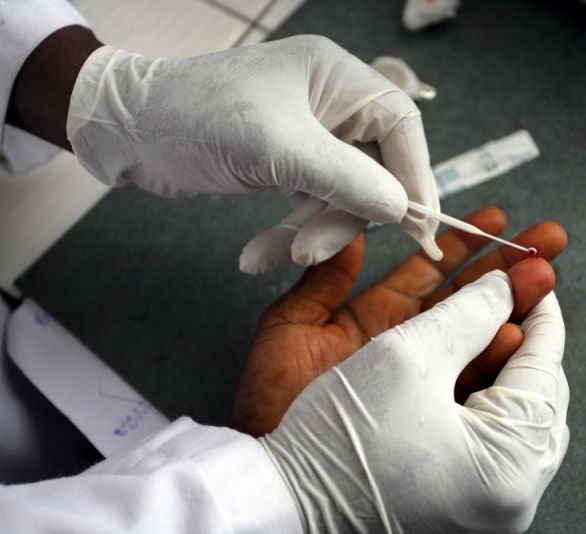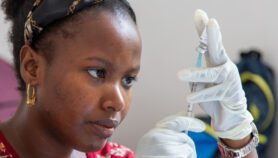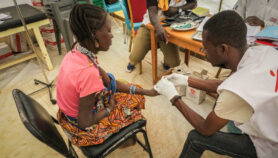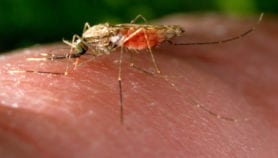By: Rachel David
Send to a friend
The details you provide on this page will not be used to send unsolicited email, and will not be sold to a 3rd party. See privacy policy.
A paper-and-plastic kit that works like a pregnancy test but using blood rather than urine may offer a fast and simple way to diagnose malaria.
The kit works by multiplying any parasite DNA in a blood sample and displaying results on a strip, even if a patient has only a small number of parasites.
“To determine the result, the user simply looks at the strip through the transparent plastic of the device to see how many lines are present,” says Mike Cordray, a researcher at Rice University in the United States, who did the work as part of his PhD thesis. If the parasite DNA is present, there are two lines, whereas one line means there is no parasite DNA.
“This is an interesting device that seems relatively easy to use and requires little, and mostly low tech, equipment and very little expertise.”
Christiaan van Ooij, Francis Crick Institute in the United Kingdom
The Malaria Journal study, published on 26 November, was a proof-of-principle study, meaning the scientists were testing whether the kit could detect the parasite in synthetic samples. But they are confident it will work in the field, says author Rebecca Richards-Kortum, a bioengineer at Rice University.
“We are now testing it with clinical samples in the lab,” she says.
There have been 214 million cases of malaria this year. The disease is currently diagnosed either by using a microscope to visually check a blood sample for parasites or by detecting the presence of parasite molecules in the sample using a method known as rapid diagnostic testing.
However, microscopy requires highly trained staff and is not always available in malaria-endemic areas. And although rapid diagnostic tests are faster, “DNA-based tests are better at reliably detecting low-level infections”, says Cordray.
But the conventional method of DNA testing, called highly sensitive polymerase chain reaction (PCR), requires expensive equipment and can take hours to run.
The new test, which uses a technique called recombinase polymerase amplification, is both faster than PCR and does not require expensive equipment. The kit contains everything needed to detect the parasite, says Cordray.
“This is an interesting device that seems relatively easy to use and requires little, and mostly low tech, equipment and very little expertise,” says Christiaan van Ooij, a malaria researcher at the Francis Crick Institute's Mill Hill Laboratory in the United Kingdom.
But he says the authors need to show that their test can detect malaria DNA from blood samples with the same sensitivity as displayed using synthetic samples. The kit also “requires a yet-to-be-developed method that can be used in the field for the preparation of the sample to be used in the device”.Cordray and Richards-Kortum estimate that their prototype cost around US$8 per test, largely because they used commercially available parts. This cost, which van Ooij notes does not seem cheap, could fall if production were scaled up, says Cordray.
References
Michael S. Cordray and Rebecca R. Richards-Kortum A paper and plastic device for the combined isothermal amplification and lateral flow detection of Plasmodium DNA (Malaria Journal, 26 November 2015)














